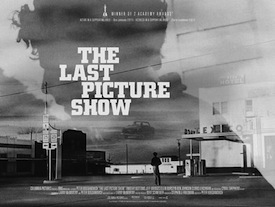 On a visit to Germany a few years ago, I planned to spend an evening at one of East Berlin’s famous jazz clubs. As I wound my way through the streets looking for the club, I heard the sounds of a guitar in the distance. Following the music, I discovered a street musician playing on a subway platform.
On a visit to Germany a few years ago, I planned to spend an evening at one of East Berlin’s famous jazz clubs. As I wound my way through the streets looking for the club, I heard the sounds of a guitar in the distance. Following the music, I discovered a street musician playing on a subway platform.
He played beautifully and, on the spot, I set aside my previous plans and decided to listen to this wonderful guitarist instead. He was playing a cedar-top Godin nylon-stringed guitar, and his small amplifier was powered by a car battery. It was a cold evening, and on both hands he wore gloves with the fingers cut out so he could play. He transitioned fluidly from classical to jazz to pop as his finger-style playing filled the subway platform.
I listened to him for quite a while — along with the revolving crowd of subway riders who stopped for a song or two on their way into and out of the station.
During a lull, the guitarist and I started talking. He was Ukrainian, but spoke enough English to make conversation possible. He asked if I played and, when I said yes, he immediately handed me his guitar.
I played and sang for a while as trains came and went. People stopped and listened and threw Euros into the guitar case he had propped open to collect his wages. The memory is clear in my mind since this was the first and the last time I ever played on the street. The fact that the crowd came and went worked well for me – since I only know the words and chords to a handful of songs from memory.
After I had finished playing a song, a man from the crowd stepped forward and asked if I would give his son guitar lessons. We lived in London at the time and it was difficult to get him to understand I didn’t live in Berlin. Understandably perplexed, he asked, “Then why are you playing guitar in the Berlin subway?” It was an obvious question and, at the moment, one for which I didn’t have a simple answer.
People have been performing in the streets for centuries (read about the history of “busking“). One such performer is singer-songwriter Peter Mulvey. He spent his early years playing and singing in the Boston subway. He credits that experience with molding him into the inventive guitarist and songwriter he is today — since a subway crowd is pretty unforgiving and will drift away the moment they get bored. I’ve seen him live a couple of times, once at a house concert in our living room, and he is a captivating performer.
 After several years as a professional, he returned to the Boston subway and produced the amazing live CD, 10,000 Mornings, recorded where he cut his musical teeth. From that CD, here’s his cover of the Paul Simon tune, Stranded in a Limousine. You can hear a subway train in the background.
After several years as a professional, he returned to the Boston subway and produced the amazing live CD, 10,000 Mornings, recorded where he cut his musical teeth. From that CD, here’s his cover of the Paul Simon tune, Stranded in a Limousine. You can hear a subway train in the background.
In a post on his website back in 1997, Mulvey shared the following list of learnings from the formative years he spent playing in the subway. He called it “Everything I Need to Know I Learned from My Subway Platform.”
Choose your battles carefully. Smile often. We are only what we give away. Pay attention. Do the best you can with the hand you’re dealt. Sometimes, all you can do is not enough. Try to learn every minute. Pace yourself. Know when to rest, and when to call it a day.
He noted that, at first glance, the list sounds like nothing more than platitudes. But he added, “I have a theory about platitudes: they only SOUND fluffy. Try to actually do any one of these things consistently, and you will be amazed.”
I think that’s a pretty good list no matter what your profession.




